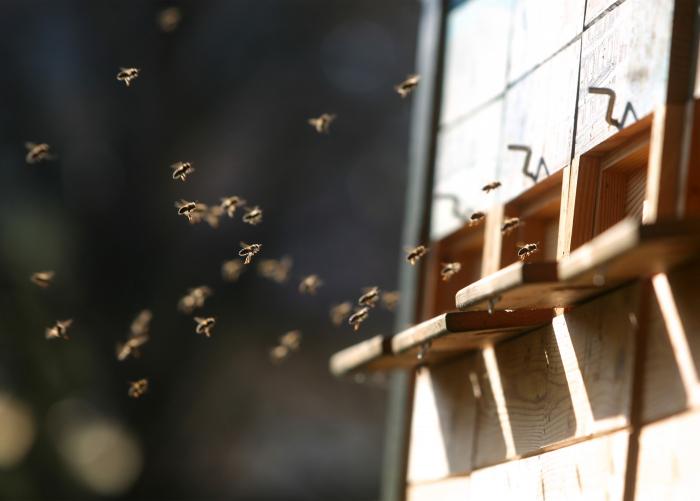
In the 19th century, Slovenian beekeepers pioneered many techniques that were eventually adopted by their counterparts from around the world. They even popularized the use of the tame but productive Carniolan honeybee, a local subspecies. In the 1830s, one of Matija Komac’s female ancestors, known as Pepa, brought the first bees from Carniola, the Slovenian heartland, to the Soča Valley. She began a tradition that quickly spread across the valley; in the decades that followed, many locals took up beekeeping and the area even featured a store devoted exclusively to honey products. The varied plant life of the Soča Valley, firmly in the Alps but subject to occasional Mediterranean climatic influences, provided an ideal environment for beekeeping, even if the political circumstances were not always favorable: Beekeeping suffered a major setback during World War I, which devastated the area, while Italy, which controlled the valley between the wars, banned the use of the Carniolan honeybee.
Shortly after the end of World War II, when the valley was awarded to Yugoslavia, Matija Komac reconstructed the apiary that bears his name. He kept much of the original design while adding traditional Slovenian beehive panels with portrayals of parables and other moral commentary, which he painted himself.
After years of neglect, Matija’s Bee House has been renovated and is an increasingly popular stop for travelers in the Soča Valley. Many visitors combine it with a tour of the new “Bee Happy” Apiary nearby – a walk-in bee house that provides tourists with a close-up experience of the honey making process and even a chance to undergo all-natural aromatherapy.
Meanwhile, the older Matija’s Bee House serves as a reminder of the region’s and the country’s impressive beekeeping legacy – a legacy that remains alive and well in the 21st century.

































































